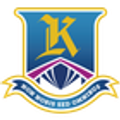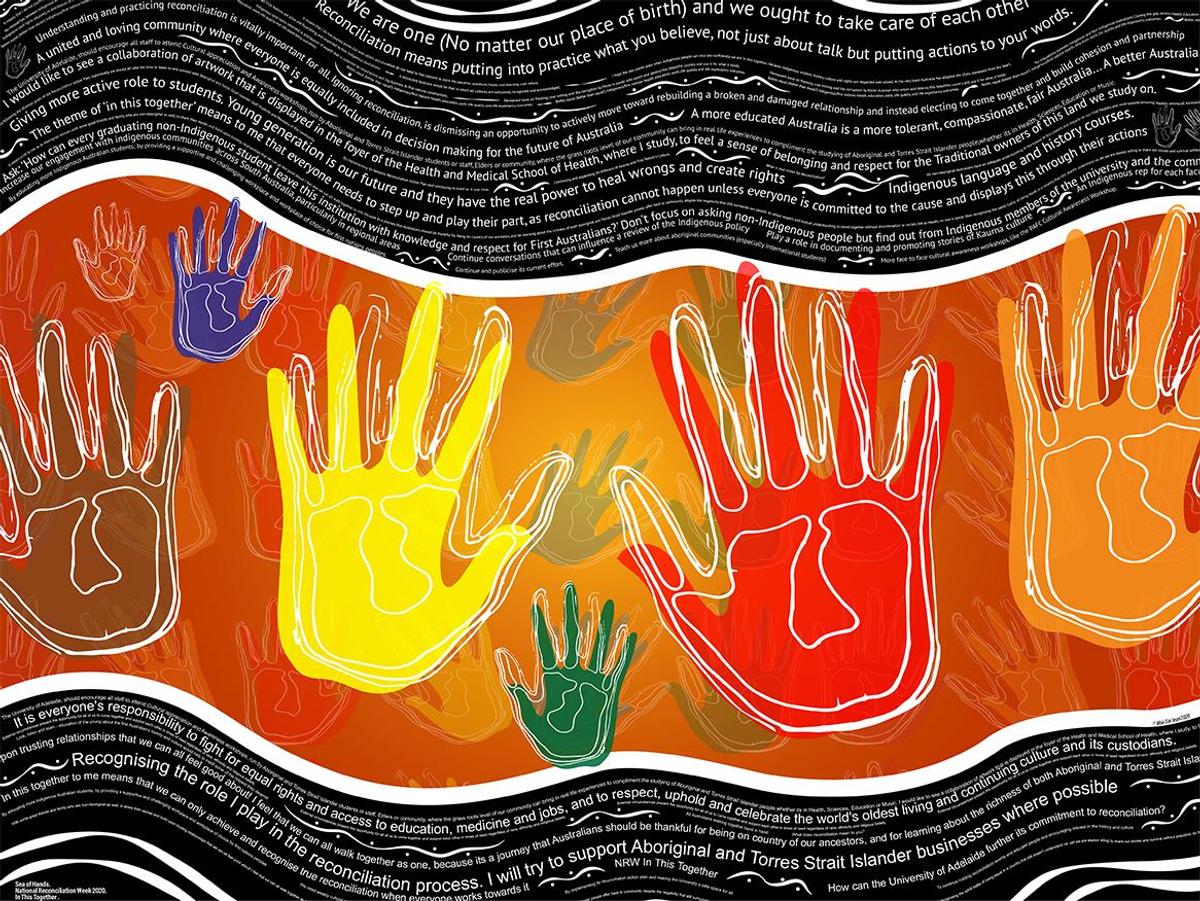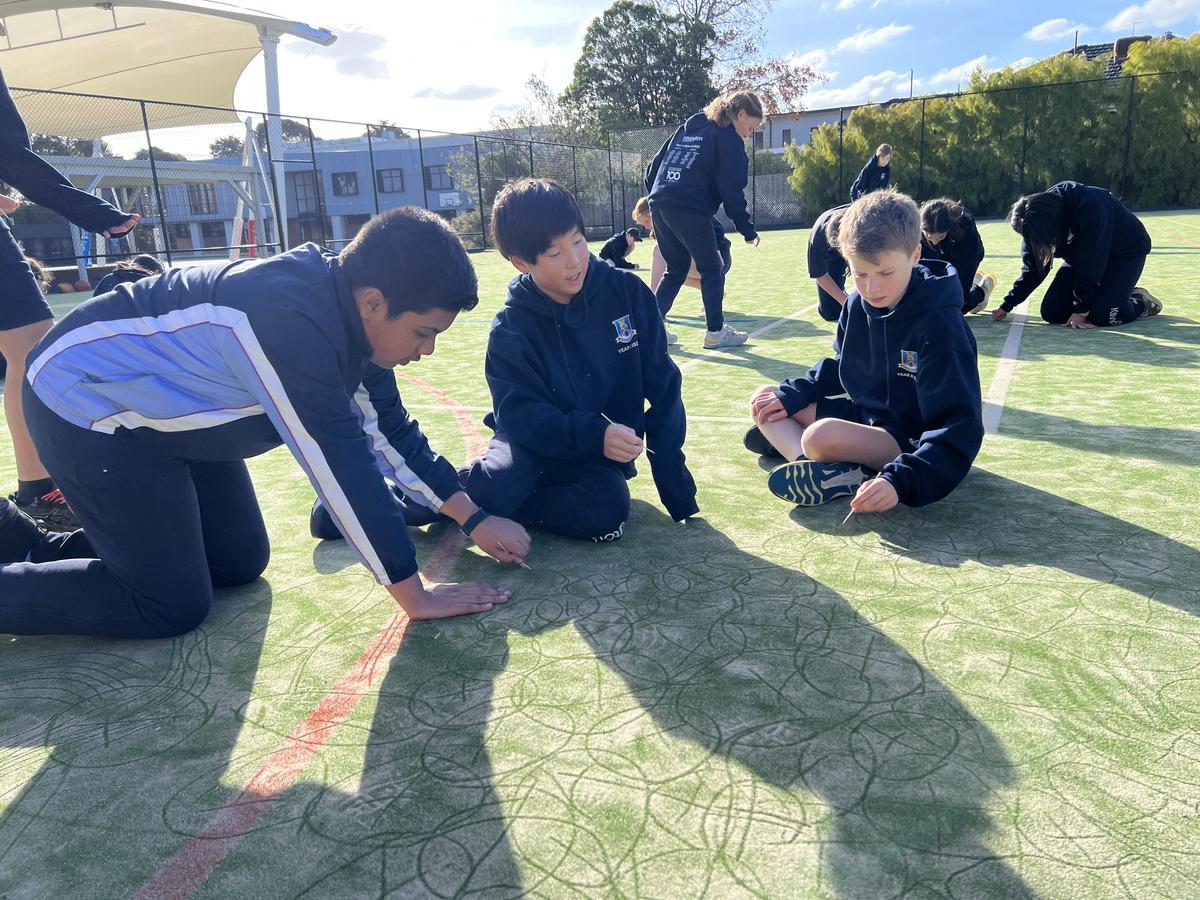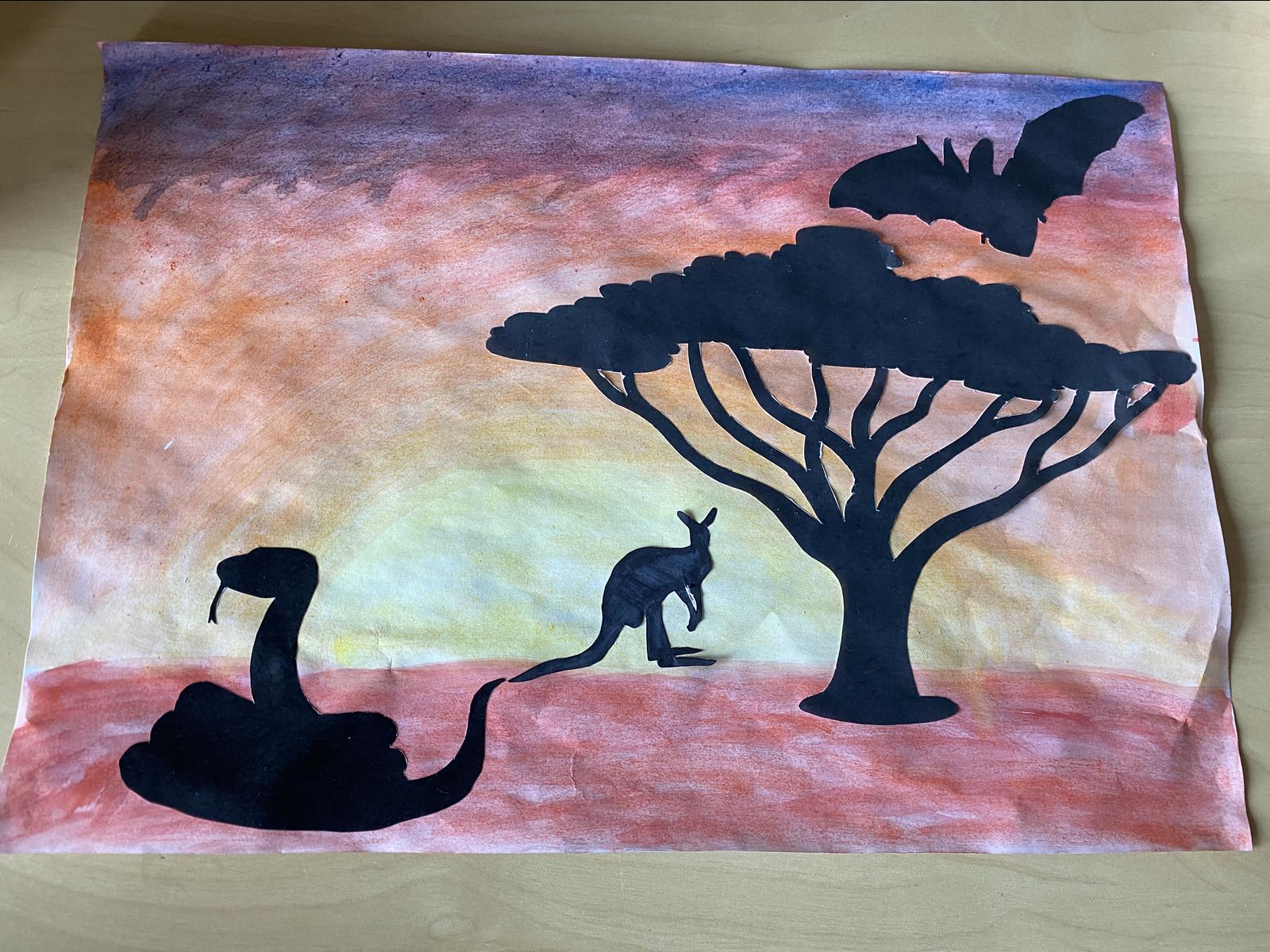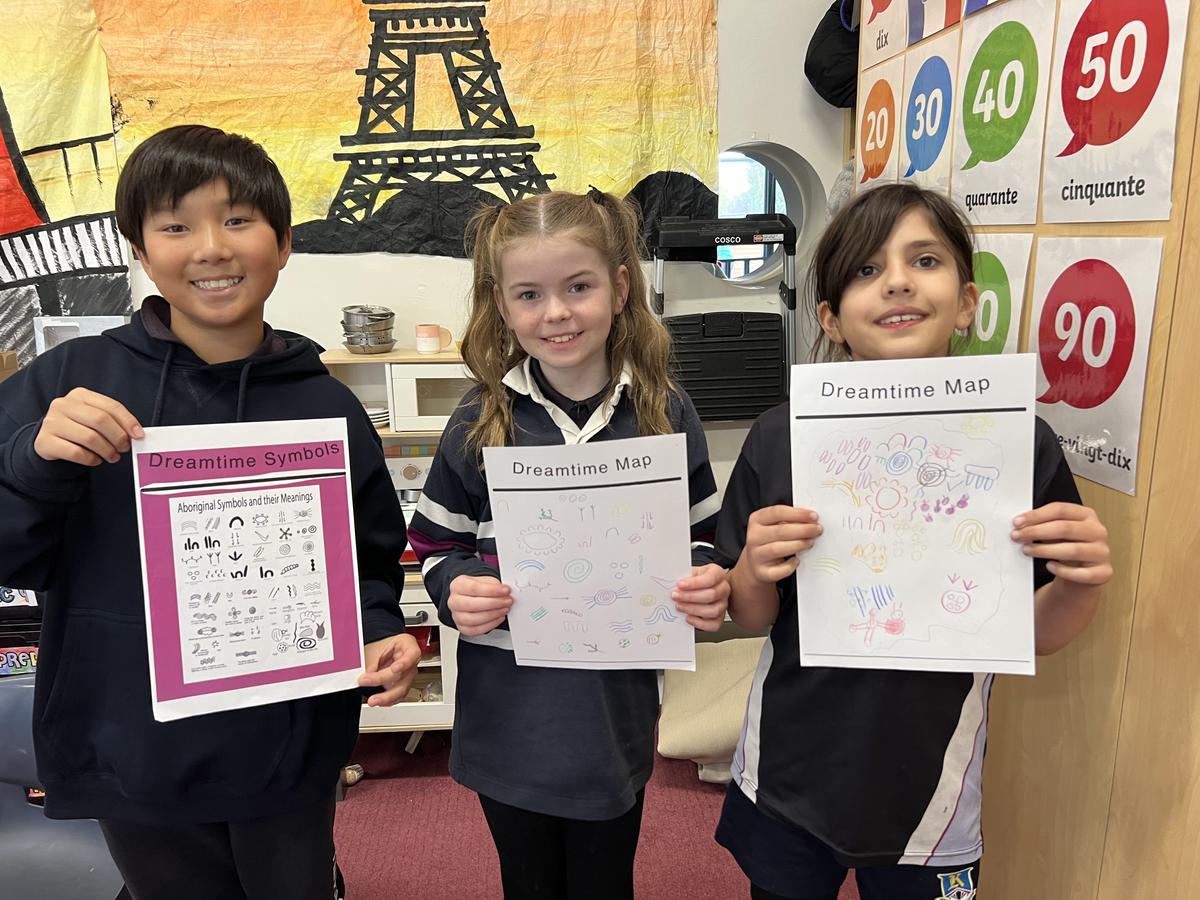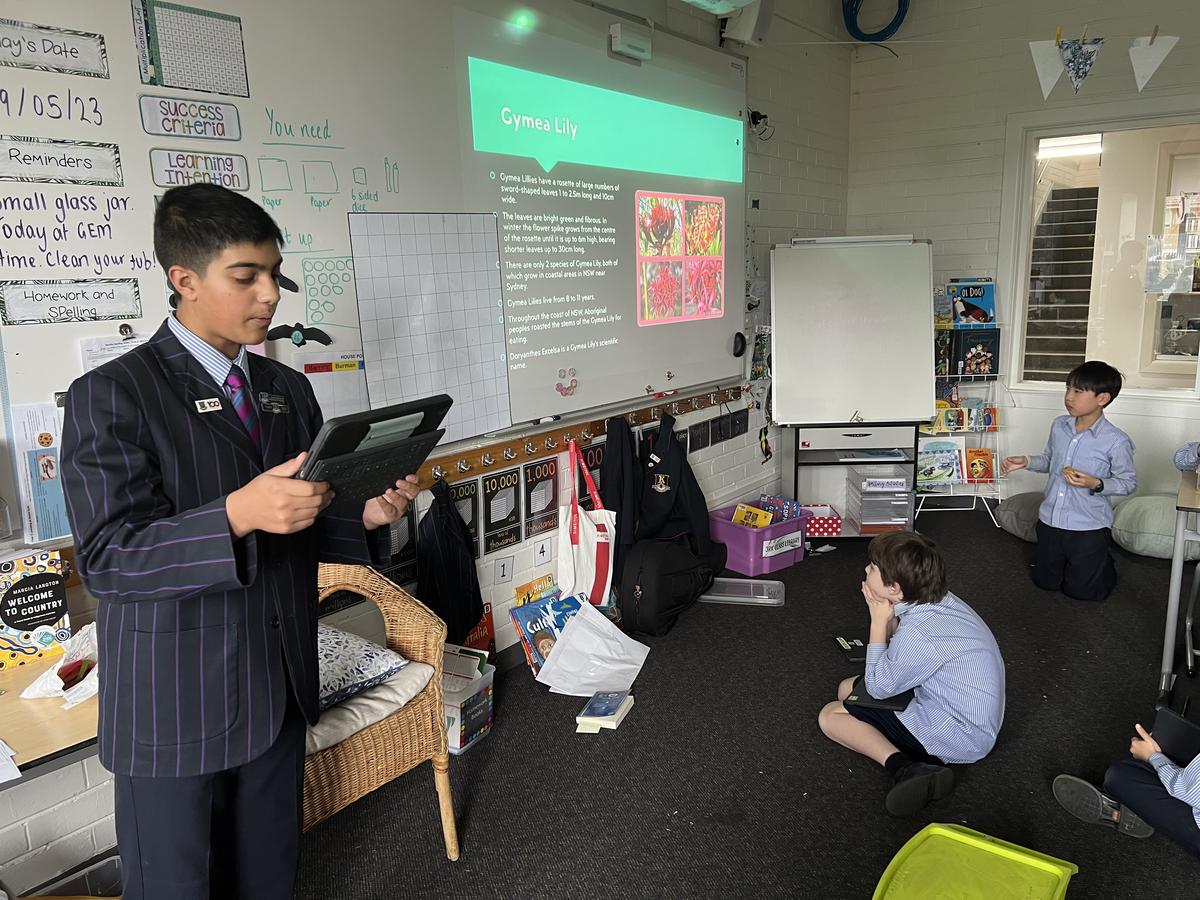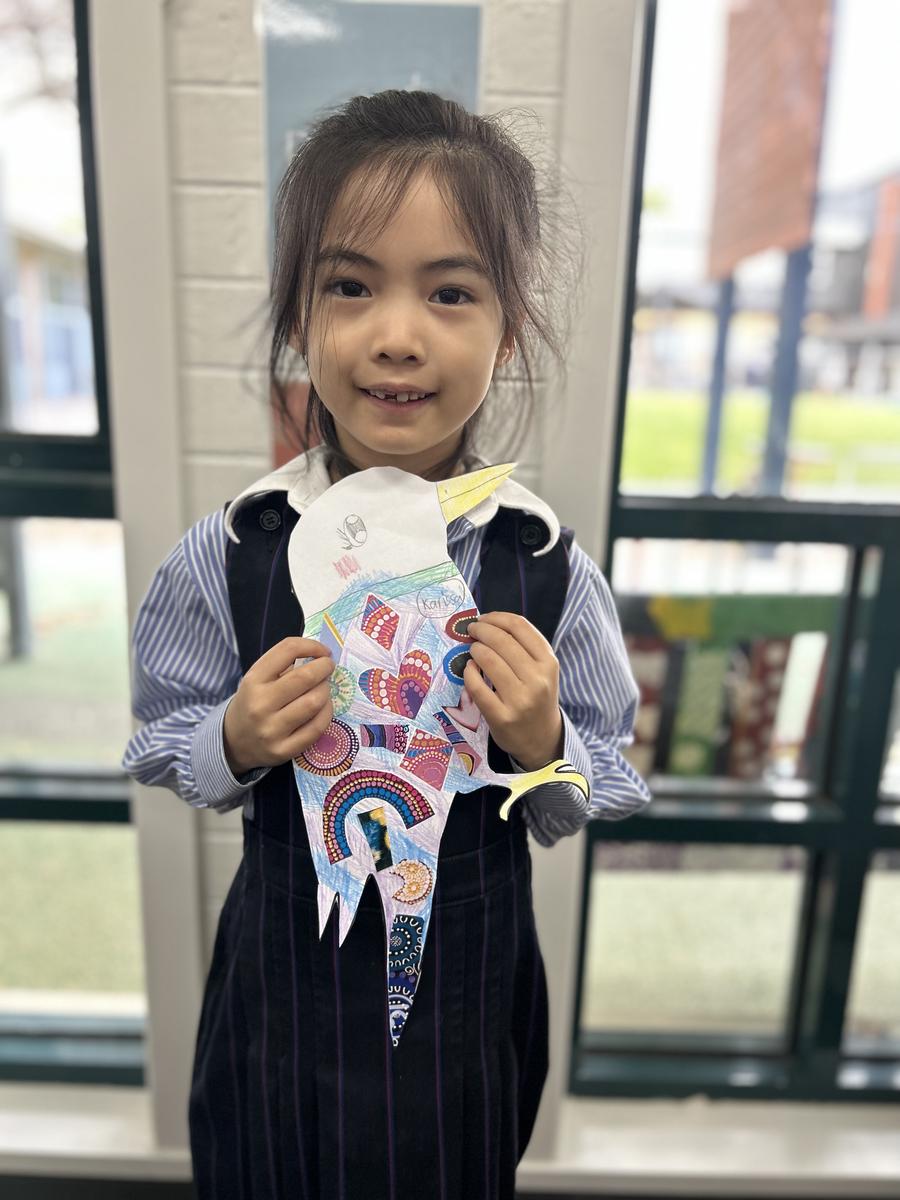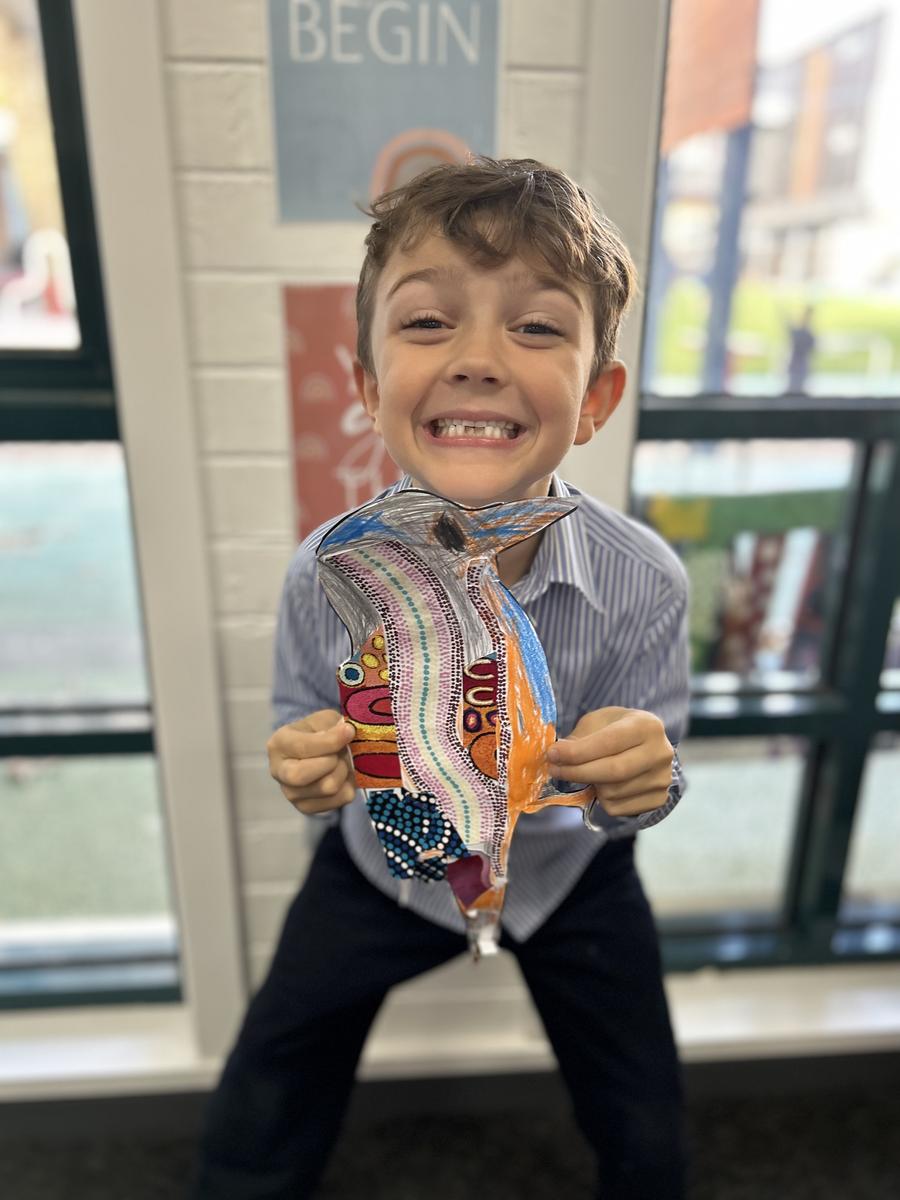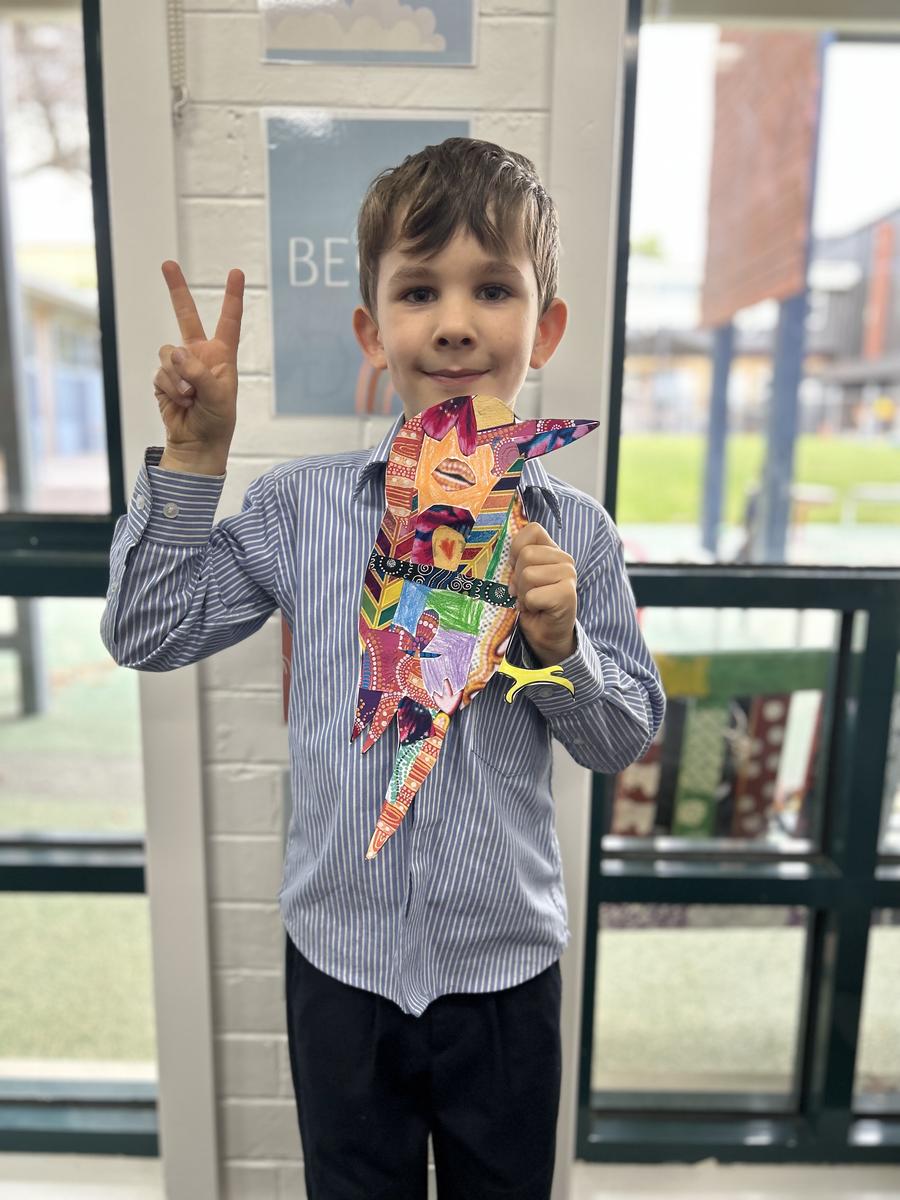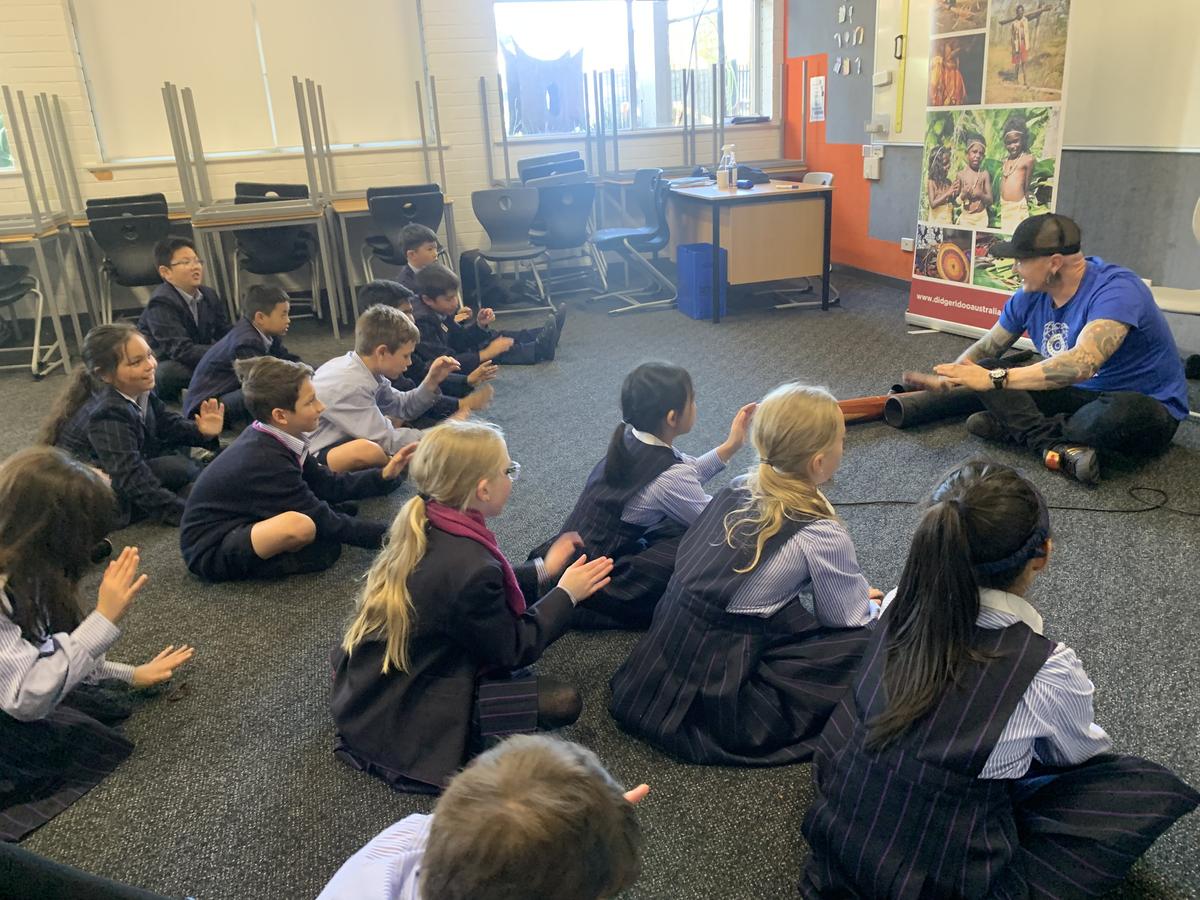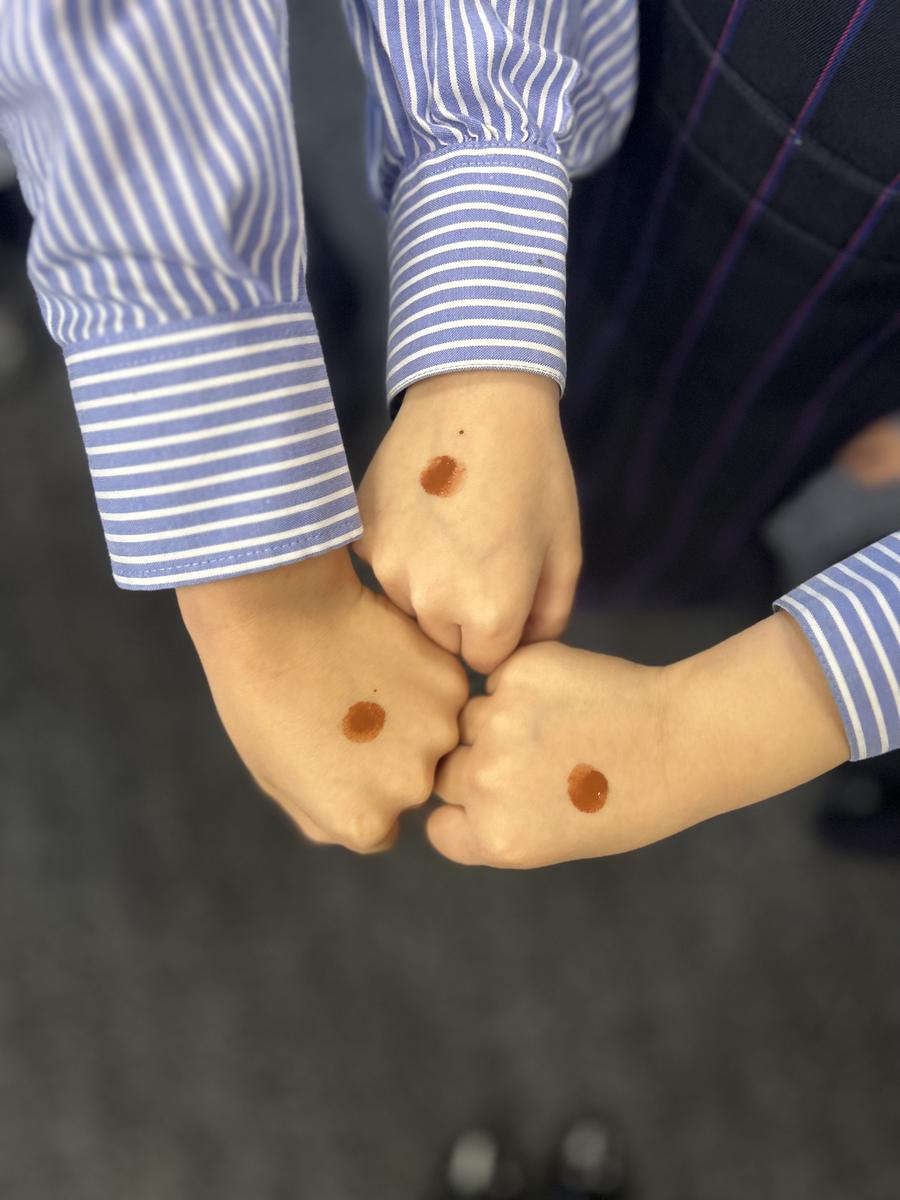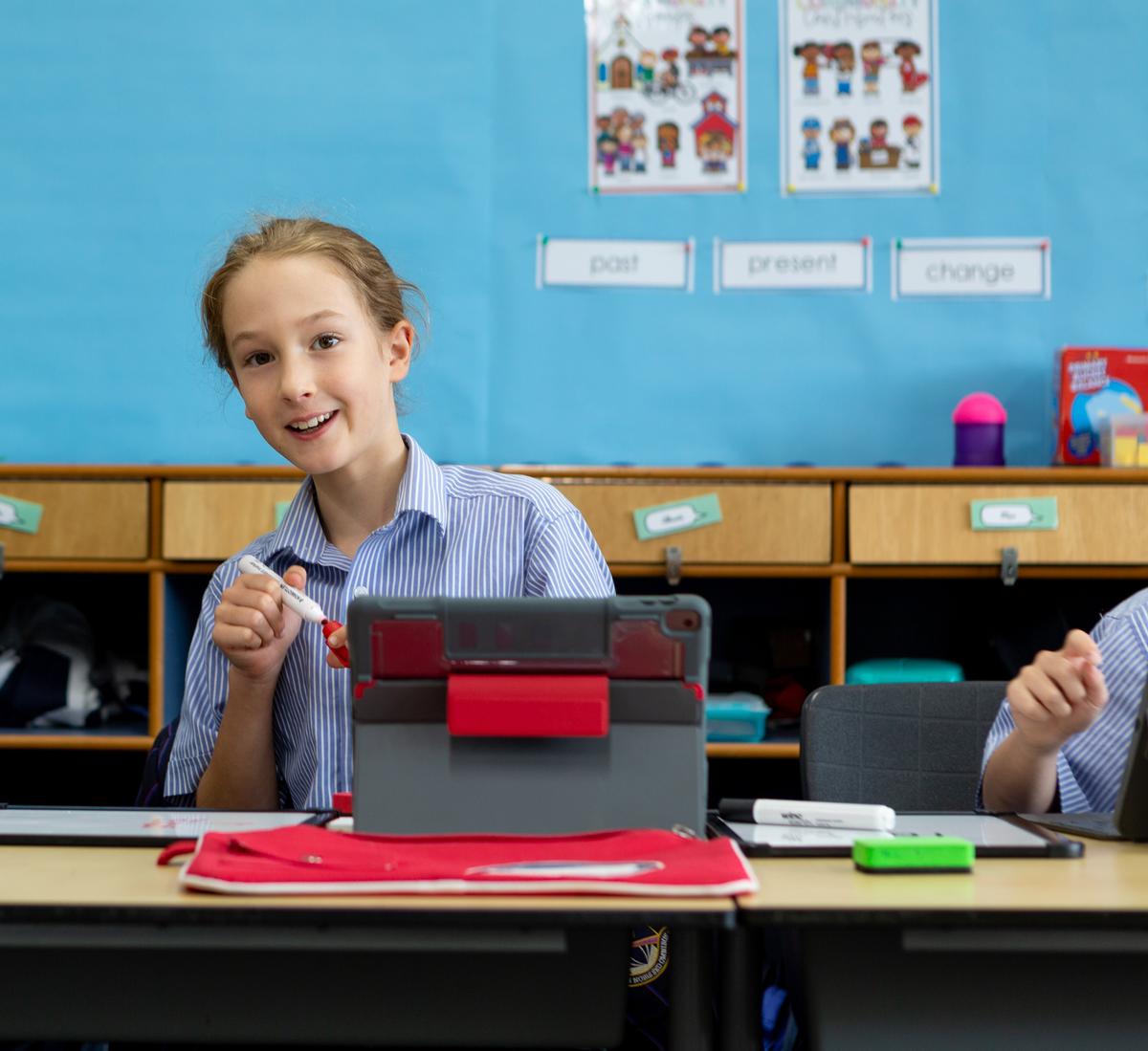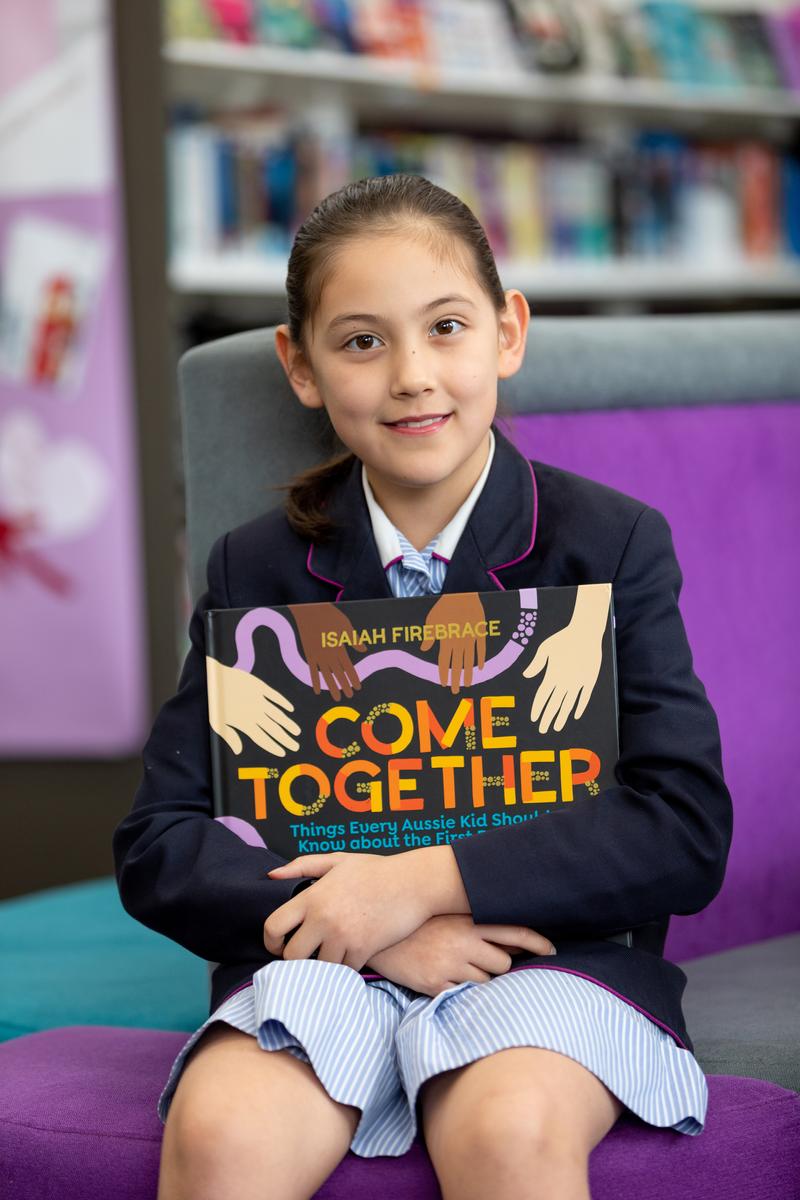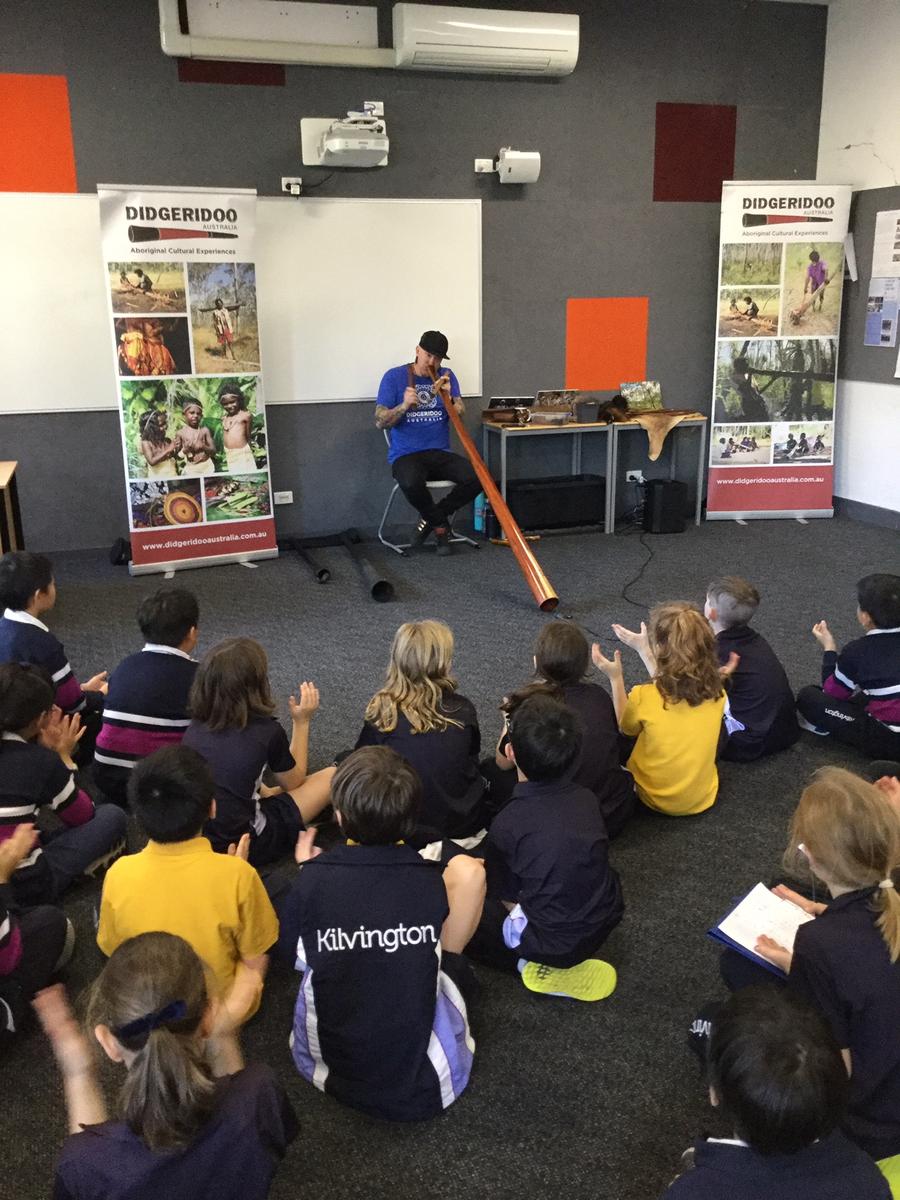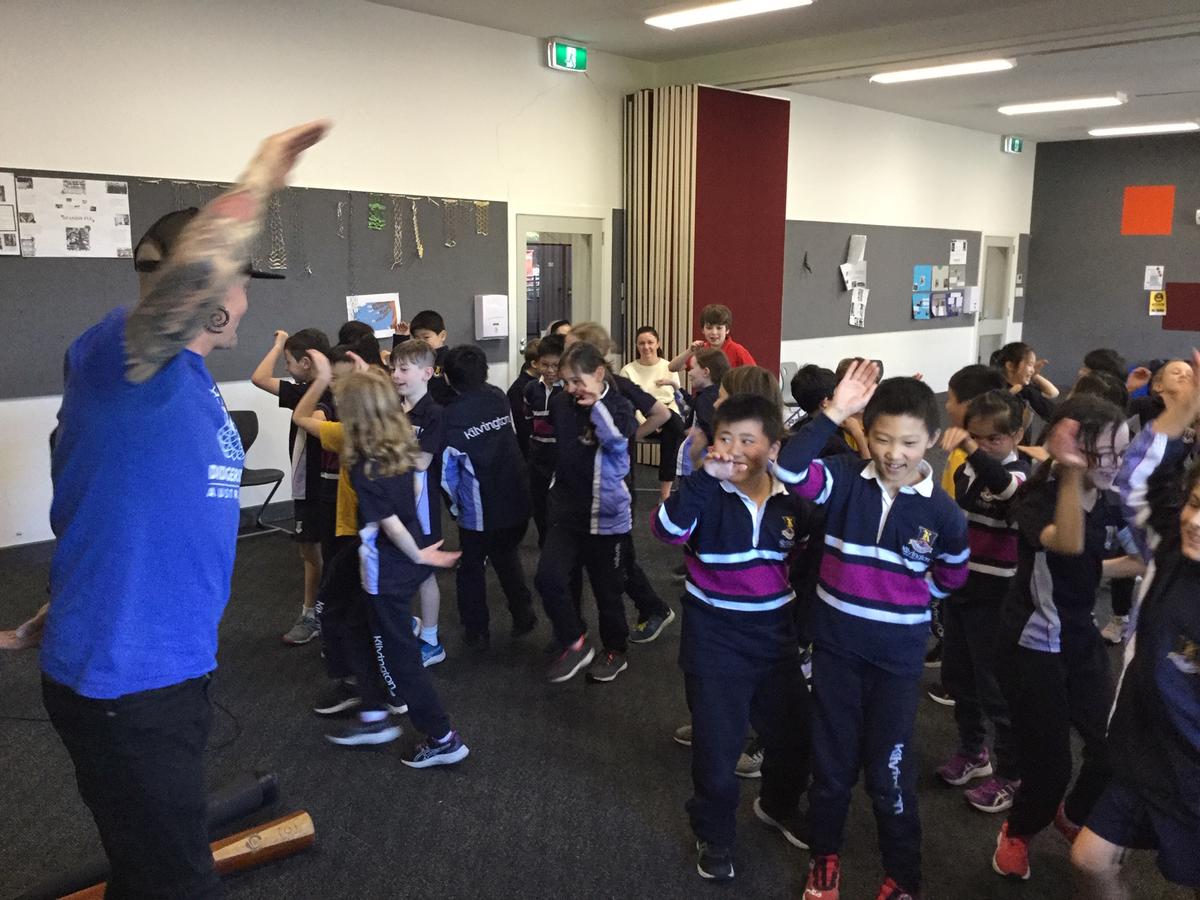School Highlights
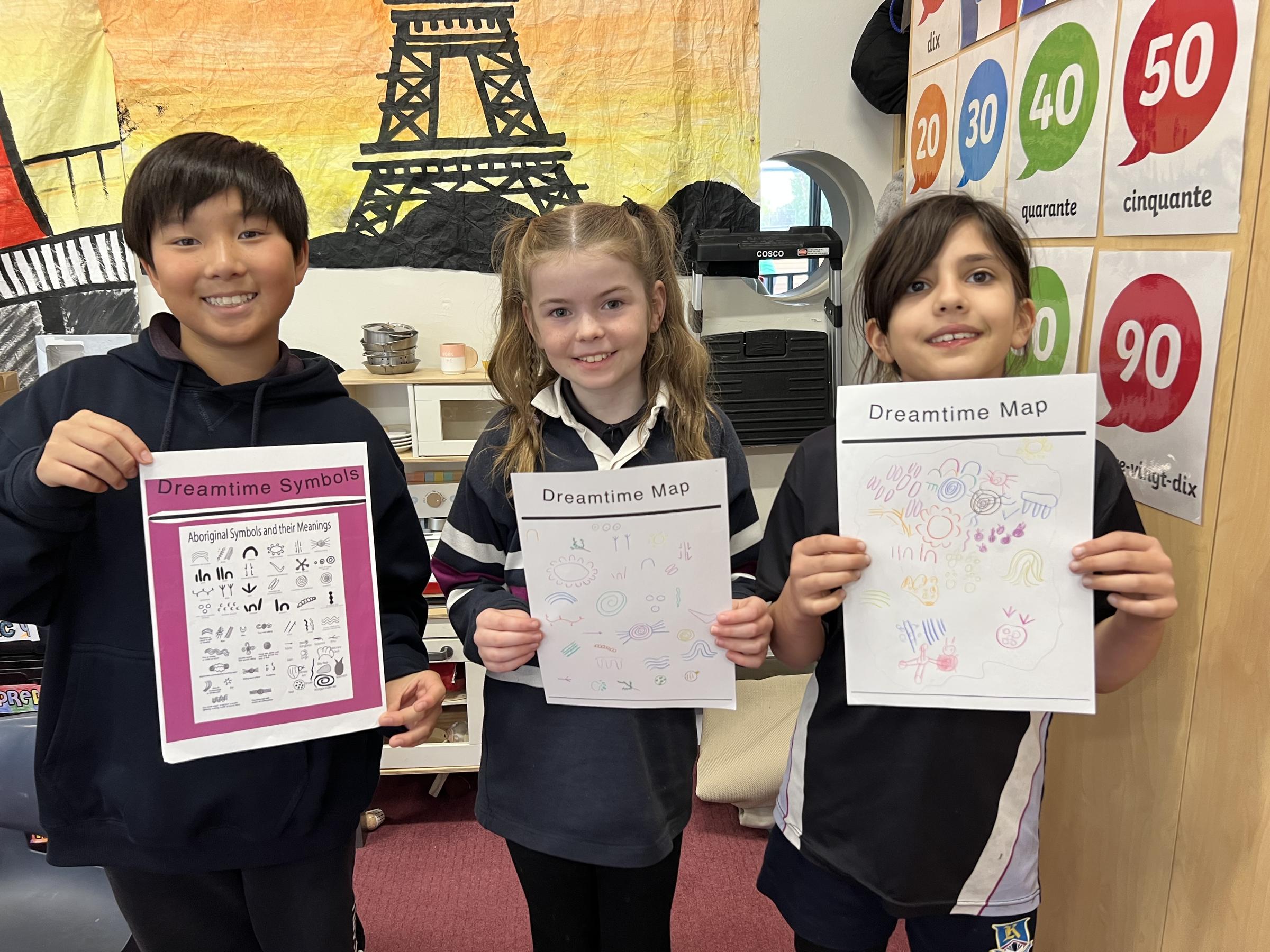
Reconciliation Week and indigenous cultural learnings in the Junior School
Charlotte Crellin, Prep Classroom Teacher
From May 27 to June 2, the Junior School came together to celebrate National Reconciliation Week.
RECONCILIATION WEEK ASSEMBLY
During our Junior School Assembly, we began with a beautiful Acknowledgement of Country, paying our respects to the First Nations people of the Wurrundgeri and Boonwurrung Counties.
Our Year 6 leaders explained the importance of each date within Reconciliation Week. Then our Preps came on stage to explain the different colours and symbols of the Aboriginal and Torres Strait Flags and then sang the Hokey Pokey in Woiwurrung language and asked for everyone to join in!
Savannah Burdon and Charlotte Ferguson (Year 6) read out loud the Indigenous storybook Finding Our Heart by Thomas Mayor.
RECONCILIATION WEEK ACTIVITIES
During lunch and recess times, our Year 6 leaders created a range of activities and games for the whole of Junior School.
The Yulunga Games took place on the Green, and involved lots of fun activities and games based on the Aboriginal culture.
The Prep to Year 2 students enjoyed Aboriginal chalk drawings and special indigenous dancing activities, all organised and led by our Year 6 leaders.
Years 3 and 4 students also actively participated in various engaging activities, including Dreamtime map-making, sharing stories, creating art, and learning about Indigenous flora and fauna, all led by Massimo Mammone, our Sustainability leader.
RECONCILIATION WEEK IN THE CLASSROOM
Learning about Reconciliation took place throughout the Junior School, with every class participating in this special week of celebrations.
The Preps went exploring through nature and collected materials to create collages inspired by Aboriginal art and culture, while the Year 1s read KooKoo Kookaburra by Gregg Dreise and made stunning kookaburras.
Using their knowledge of Aboriginal symbols and storytelling styles, the Year 3s created outstanding Dreaming stories. It was a wonderful display of using Aboriginal art and symbols to inspire our curiosity.
So much went on for each year level! It was a wonderful week of learning and celebrations.
Incursion with Ganga Giri
Just after Reconciliation Week, Kilvington played host to Ganga Giri from Digeridoo Australia!
Ganga, a Palawa musician, shared his Aboriginal music and culture with the Junior School. Students listened to him play the digeridoo and create animals sounds. We joined in the beat with rhythm sticks and followed the beats of our heart.
Ganga Giri showed the students how to make ochre, a natural clay earth pigment. He also showed us how this pigment is used by his family in their special ceremonies. He brought in lots of different artifacts likes possum skins, emu eggs and boomerangs to show the kids.
Kilvington Junior School are on the path to embedding First Nations culture into our classrooms and we endeavour each day to bring the beauty and history of this ancient culture to life.
Here is an account from Year 3 students, Mona and Louis, about their experience of this incursion.
Mona Bachmann and Louis Allen, Year 3
We acknowledge the Boonwurrung and Wurrundgeri peoples of the Kulin nation. We acknowledge their elders past, present and emerging.
On Thursday 8 June, Year 3s had an incursion about didgeridoos and Aboriginal culture from a man called Ganga Giri.
To start with, Ganga played us some nature sounds on the didgeridoo. He was very talented! Ganga told us that didgeridoos are made from wood that is hollow because termites chew it. You can scratch bark off the didgeridoo to make it green. The green colour is there from leaves that haven’t blossomed.
Ganga told us he moved from Tasmania to Arnhem Land, which is where he learned to play the Yidaki (also known as a didgeridoo). Didgeridoos have a low sound and were traditionally for men and boys. To play the didgeridoo, you need to use circular breathing, which is when you breathe through your nose and squeeze your cheeks.
Ganga played us one of his own music tracks called Coming Together. In this track, we heard an emu, a snake and a kangaroo. Ganga also showed us an emu egg and how the dad emu sits on the nest and that the dad emu gets distracted easily when he’s doing his only job in the whole wide world. But beware of grown-up emus because they are very tall and can run up to 60kmph.
Here is a quick quiz for you on what emu eggs taste like.
(A) pigeon
(B) chicken
(C) fish
If you said chicken, you are 100% correct. Congratulations!
Ganga mentioned that Aboriginal people live in harmony with nature. He meant that Aboriginal people connect with the land and treat it well and return what the land gives them.
Then someone said, ‘I always see Aboriginal people wear paint on their bodies.’ Ganga told us that the paint is called ochre and showed us how to make it. The process was quite unexpected. Why? Because ochre is made by soft rocks rubbed on a hard rock. When you rub the two together, some dust is made. If you sprinkle a little water on the dust, it becomes ochre. Ta da! A little while after Ganga made the ochre, he let us put some on! The ochre we used was red.
We were very lucky because we got to see three boomerangs! Two of them were hunting boomerangs (the ones that don’t come back) and the other was a normal boomerang (the one that does come back).
Be careful! Don’t catch a boomerang the same way that you would catch a tennis ball or a ball. Ganga told us, ‘When I was six, I tried that, and I broke my finger!’ Yikes, that’s got to hurt! He said the proper way to catch one is to clasp your hands like a crocodile mouth closing, then you will be fine (unlike Ganga).
The incursion was an incredible experience. Five out of five from us!
